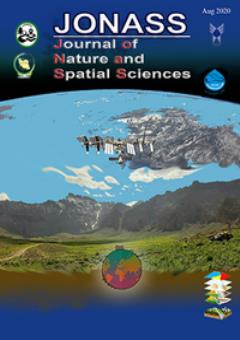Spatial and Temporal Analysis of NO2 Pollution in Tehran Province Using Giovanni: Insights for Air Quality Management in Iran
Subject Areas : Environment
1 - Maybod Branch, Islamic Azad University, Maybod, Iran
Keywords: Nitrogen Dioxide (NO2) Pollution, Remote Sensing, Temporal and Spatial Analysis, Urban Air Quality,
Abstract :
Background and objective: Air pollution, particularly nitrogen dioxide (NO2), has become a critical environmental issue in Tehran, with adverse effects on human health and the ecosystem. Understanding the spatial and temporal variability of NO2 is essential for effective air quality management. This study aims to investigate the seasonal variations and distribution of NO2 concentrations in Tehran using satellite-derived data and to assess the influence of human and natural factors and activities. Materials and methods: The research utilizes satellite data from NASA’s Giovanni system, focusing on NO2 levels over Tehran City. Sentinel-5P satellite images were analyzed using Google Earth Engine (GEE) to assess the spatial distribution of NO2 concentrations. The study examined seasonal trends from 2020 to 2023, correlating the data with meteorological parameters like wind speed. Statistical analyses were applied to validate the relationship between NO2 levels and influencing factors. Results and conclusion: The results revealed significant seasonal variability, with NO2 concentrations peaking during colder months. Meteorological factors, particularly wind speed was found to play a crucial role in NO2 dispersion. Additionally, areas with high traffic density and industrial activities exhibited elevated NO2 levels. This study highlights the need for targeted pollution control measures, especially during winter, and underscores the impact of urban planning on air quality. The findings provide a foundation for future research and policymaking aimed at reducing NO2 emissions in urban areas.
Afarideh, F., Ramasht, M. H., & Mortyn, G. (2023). Air pollution and topography in Tehran. AUC GEOGRAPHICA, 58(2), 157-171 https://doi.org/10.14712/23361980.2023.12
Anggraini, T. S., Irie, H., Sakti, A. D., & Wikantika, K. (2024). Machine learning-based global air quality index development using remote sensing and ground-based stations. Environmental Advances, 15, 100456 https://doi.org/10.1016/j.envadv.2023.100456
Asghar Pilehvar, A. (2021). Spatial-geographical analysis of urbanization in Iran. Humanities and Social Sciences Communications, 8(1), 1-12. https://doi.org/10.1057/s41599-021-00741-w
Askariyeh, M. H., Vallamsundar, S., & Farzaneh, R. (2018). Investigating the impact of meteorological conditions on near-road pollutant dispersion between daytime and nighttime periods. Transportation Research Record, 2672(25), 99-110. https://doi.org/10.1177/0361198118796966
Cheng, B., Ma, Y., Zhao, Y., Qin, P., Feng, F., Liu, Z., ... & Zhang, Y. (2024). Influence of topography and synoptic weather patterns on air quality in a valley basin city of Northwest China. Science of The Total Environment, 934, 173362. https://doi.org/10.1016/j.scitotenv.2024.173362
Geddes, J. A., Martin, R. V., Boys, B. L., & van Donkelaar, A. (2016). Long-term trends worldwide in ambient NO2 concentrations inferred from satellite observations. Environmental health perspectives, 124(3), 281-289. https://doi.org/10.1289/ehp.1409567
Halder, B., Ahmadianfar, I., Heddam, S., Mussa, Z. H., Goliatt, L., Tan, M. L., ... & Yaseen, Z. M. (2023). Machine learning-based country-level annual air pollutants exploration using Sentinel-5P and Google Earth Engine. Scientific Reports, 13(1), 7968 https://doi.org/10.1038/s41598-023-34774-9
Huang, T., Zhu, X., Zhong, Q., Yun, X., Meng, W., Li, B., ... & Tao, S. (2017). Spatial and temporal trends in global emissions of nitrogen oxides from 1960 to 2014. Environmental science & technology, 51(14), 7992-8000. https://doi.org/10.1021/acs.est.7b02235
Kasparoglu, S., Incecik, S., & Topcu, S. (2018). Spatial and temporal variation of O3, NO and NO2 concentrations at rural and urban sites in Marmara Region of Turkey. Atmospheric pollution research, 9(6), 1009-1020. https://doi.org/10.1016/j.apr.2018.03.005
Lee, J. H., Wu, C. F., Hoek, G., de Hoogh, K., Beelen, R., Brunekreef, B., & Chan, C. C. (2014). Land use regression models for estimating individual NOx and NO2 exposures in a metropolis with a high density of traffic roads and population. Science of the total environment, 472, 1163-1171. https://doi.org/10.1016/j.scitotenv.2013.11.064
Naddafi, K., Hassanvand, M. S., Yunesian, M., Momeniha, F., Nabizadeh, R., Faridi, S., & Gholampour, A. (2012). Health impact assessment of air pollution in megacity of Tehran, Iran. Iranian journal of environmental health science & engineering, 9, 1-7. https://doi.org/10.1186/1735-2746-9-28
Sicard, P., Agathokleous, E., Anenberg, S. C., De Marco, A., Paoletti, E., & Calatayud, V. (2023). Trends in urban air pollution over the last two decades: A global perspective. Science of The Total Environment, 858, 160064. https://doi.org/10.1016/j.scitotenv.2022.160064
Voiculescu, M., Constantin, D. E., Condurache-Bota, S., Călmuc, V., Roșu, A., & Dragomir Bălănică, C. M. (2020). Role of meteorological parameters in the diurnal and seasonal variation of NO2 in a Romanian urban environment. International Journal of Environmental Research and Public Health, 17(17), 6228 https://doi.org/10.3390/ijerph17176228
Yang, J., Shi, B., Shi, Y., Marvin, S., Zheng, Y., & Xia, G. (2020). Air pollution dispersal in high density urban areas: Research on the triadic relation of wind, air pollution, and urban form. Sustainable Cities and Society, 54, 101941. https://doi.org/10.1016/j.scs.2019.101941
Yan, T., Wu, M., Zhan, Y., & Hu, Z. (2023). Changes in air pollution control policy instruments: Based on a textual analysis for southwest China 2010–2021. Atmosphere, 14(2), 414. https://doi.org/10.3390/atmos14020414
Zhang, B., Zhang, J., & Feng, T. (2024). A global comparative study on the impact of COVID-19 policy on atmospheric nitrogen dioxide (NO2): Evidence from remote sensing data in 2019–2022. Journal of Environmental Management, 367, 121851. https://doi.org/10.1016/j.jenvman.2024.121851

